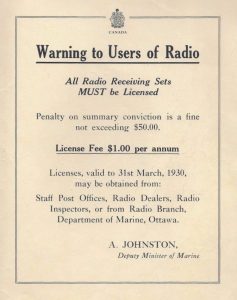Canadian Homes and Nation
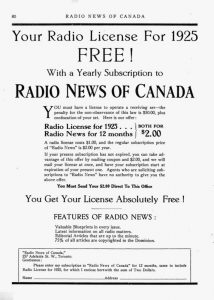
“FREE! With a Yearly Subscription…” Radio News of Canada 4, no.5 (November 1925): pp 80. La Société Québécoise des Collectionneurs de Radios Anciens (SQCRA).
Once Canada had established a true national network, radio connected Canadian homes in a way they had never been before. The Canadian National Railways network had broadcast across the country in different locations. CNR did not create programming for the country. Their broadcasts were primarily for the enjoyment of the passengers on their trains. Local and independent radio stations served their local audiences within the listening range of their stations. Some small networks started to form in Canada to share programming. Finally, five stations became part of American networks as affiliates. Four of them joined before Canada established its own national network.
Listen to the audio clip with transcript: “Canada’s Diamond Jubilee, 1927 ”
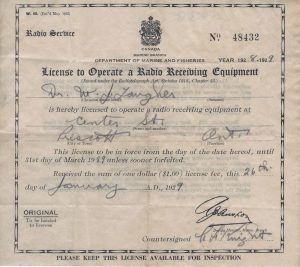
“License to Operate a Radio Receiving Equipment,” Department of Marine and Fisheries, Canada (1928-29). Musée des ondes Emile Berliner.
In 1922, broadcasters and listeners were required to pay for licences. The licensing of radio receiving became controversial when the annual fee increased from $1.00 to $2.50 to finance the CBC. The comparison to “free” American commercial radio created some resentment about the new national network.
Inspectors came from the Department of Marine and Fisheries until the late 1940s. This responsibility was transferred to the Department of Transportation after the 1940s. They made the rounds checking for radio licences. In rural areas, people warned their neighbours about radio inspectors. Radio owners took unlicensed radios out of houses and hid them in the woods like their moonshine equipment to avoid paying the fine for unlicensed broadcasting.
The 1932 Radio Act established the new Canadian Radio Broadcasting Commission (CRBC) which broadcast in the evenings. It produced its programs in one city and distributed them throughout their network across the country. But the CRBC was short-lived and replaced by the Canadian Broadcasting Corporation (CBC) in 1936.
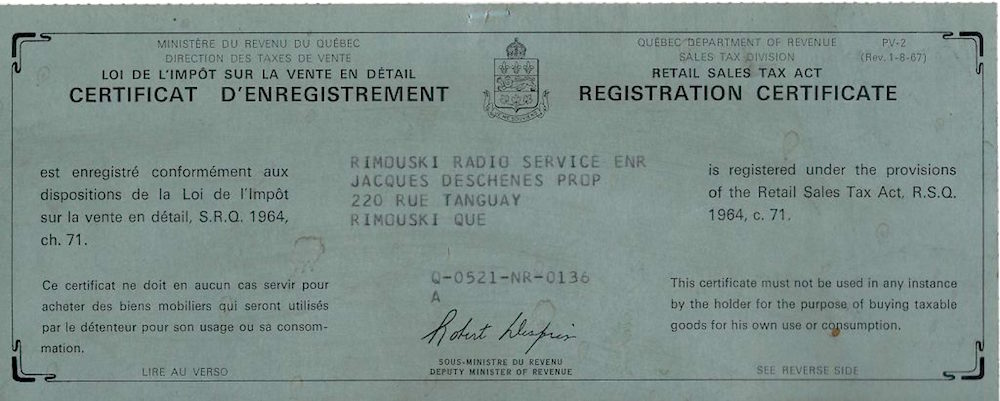
“Retail Sales Tax Act: Registration Certificate,” Québec Department of Revenue Sales Tax Division (1964). Musée des ondes Emile Berliner.
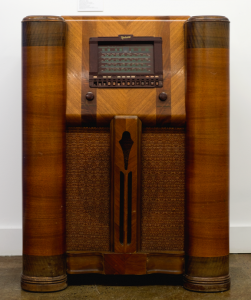
Tube Radio, Marconi: Model 188 (1940), Montréal, Québec, 94 x 71 x 32cm. Musée des ondes Emile Berliner.
Only after a national network had been formed did radio become not only a part of the home but also a part of Canadian culture. Shared programming, such as the CBC’s “Happy Gang,” created a common culture throughout the nation. Many people remembered the program as long as seventy years later.


